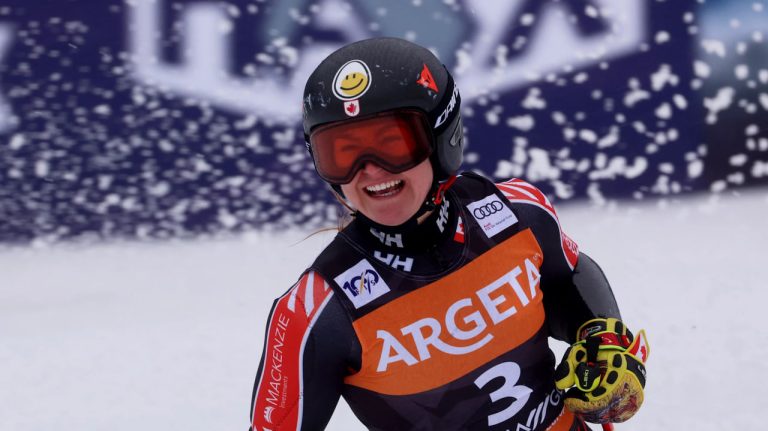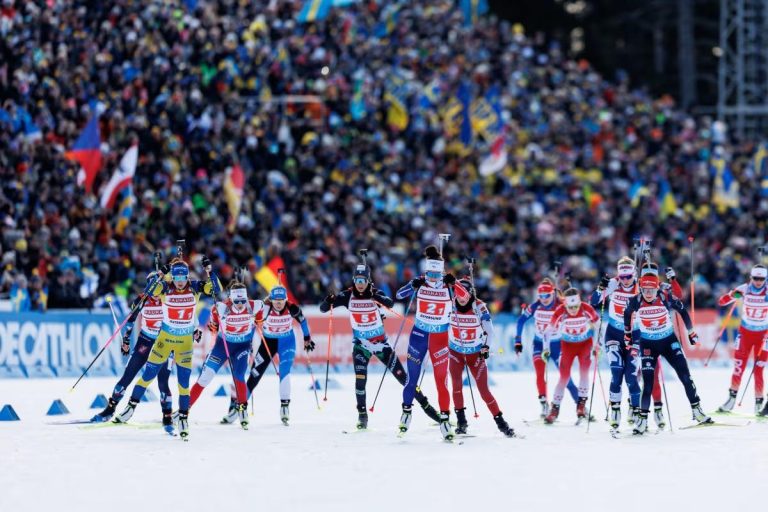“Full Speed”: A colorful take on a well-known track, Netflix’s NASCAR drama
NASCAR faces a significant challenge, and it’s not primarily the aging fan base, waning interest in automobiles, or the shorter attention spans of the audience. The critical issue lies in NASCAR’s drivers, who, unlike other team sports, tend to retire or stop competing.
In contrast to team sports like basketball or college football, where the continuity of the teams is more assured, NASCAR grapples with the uncertainty of its most marketable assets – the drivers. Fans of traditional teams can expect their favorite teams to continue playing for years to come, unlike the unpredictable nature of driver longevity in NASCAR.
However, in NASCAR, every driver eventually reaches the end of their career, marked by the checkered flag. For fans who have grown up supporting iconic figures like Richard Petty, Dale Earnhardt, Jeff Gordon, Tony Stewart, or Dale Earnhardt Jr., the conclusion of a driver’s career, whether abrupt or long-anticipated, can leave them feeling lost. Shifting loyalty from one driver to another isn’t a simple task, and NASCAR has invested considerable time and social media efforts in trying to cultivate a fan base for the new generation of drivers.
The latest significant endeavor in this direction is “Full Speed,” a five-part Netflix series currently airing. The series focuses on the 10-race playoffs from 2023 and offers impressive, though somewhat familiar, content—featuring extensive behind-the-scenes access, emotional moments, and tensions both within and between races. The conflicts and drama portrayed are largely authentic. While such a series would have been groundbreaking half a decade ago, it has now become almost standard fare for any sport, excluding perhaps the NFL.
Netflix’s original racing series, “Drive To Survive,” has a significant influence on “Full Speed,” the Formula 1-focused racing series. Bubba Wallace even makes a reference to “Drive To Survive” during his on-camera interview for “Full Speed.” Upon entering the studio, he questions, “Is this the ‘Drive To Survive’ moment?” mimicking the format of the well-known Formula 1 series.
However, the distinction lies in the genre. While “Drive to Survive” is a reality show with a competitive backdrop, “Full Speed” is more of a competitive saga with elements of reality TV. The notable difference is that “Full Speed” doesn’t have the global scale of “Drive To Survive.” The series takes viewers inside Denny Hamlin’s impressive house, but it lacks the extravagant settings like a yacht off the coast of Monaco. The locations covered in “Full Speed” range from Daytona to Darlington to Martinsville to Phoenix, all prominent in NASCAR, but they don’t match the international allure of tracks like Monza, Spa, or Baku seen in “Drive To Survive.”
NASCAR recognizes the need to establish connections between its current roster of drivers and its present as well as future fan base, and this is where “Full Speed” excels. After the obligatory (and unnecessary) introduction portraying these drivers as modern-day gladiators risking their lives, the series delves into showcasing the spotlight drivers in various situations—celebrating, dealing with challenges, and expressing frustration, with no censorship.
The spotlight is shared among Tyler Reddick, Joey Logano, Ross Chastain, Kyle Larson, and Ryan Blaney, providing insights into their personalities that go beyond the surface. Notably absent, whether intentionally or due to circumstances, are established NASCAR veterans like Kyle Busch, Brad Keselowski, and the retiring Kevin Harvick. This absence aligns with the documentary’s focus on NASCAR’s future. Another omission is Chase Elliott, the reigning Most Popular Driver in NASCAR, and while it might be seen as a significant loss considering Elliott’s reserved on-camera demeanor, the success of “Drive To Survive” without certain key figures is noted (e.g., Max Verstappen). The narrative also features familiar individuals like wives, children, crew chiefs (with Bootie Barker from Wallace’s crew standing out), and occasional appearances from Michael Jordan.
Hamlin takes center stage in the series, a strategic decision that proves wise, at least until he (spoiler) falls short of making the final championship four. Placing him at the heart of the documentary is a shrewd choice, considering his exceptional talent – ranking 13th all-time with 51 career victories, with only Petty and Cale Yarborough having more Daytona 500 wins. Despite his impressive records, the absence of a championship title looms over Hamlin, a glaring asterisk that he acknowledges, though defensively downplays. While he claims to be content without a championship, even a first-time viewer can perceive the defensive facade. Hamlin’s mix of arrogance, insecurity, exceptional talent, and the void in his trophy collection make him one of the most captivating drivers in NASCAR, presenting one of the more compelling stories in current sports. The evident anguish he experiences from missing out on another title resonates through the screen.
The essence of captivating individuals, be they newcomers or seasoned fans with decades of experience, lies in the stories. The narratives underlying each driver on the track are the driving force behind this sport. While these stories may not be as cinematic as Petty’s triumphs, as feel-good as Gordon’s, or as intense as Earnhardt’s, they are stories nonetheless. The more effectively NASCAR can share these narratives, the more positively it will impact the sport.
Additionally, the auditory experience is noteworthy. Perhaps it’s because this documentary arrives amid a lengthy, NASCAR-less winter, but the visual spectacle of a vibrant array of cars on the track and the thunderous engine roars, hitting you in the chest before reaching your ears, embodies the essence of the sport. “Full Speed” captures that profound, guttural rumble, making it ideal for playback on the most powerful sound systems available. Any platform, whether it be a documentary, film, virtual-reality game, fragrance, or any other medium, that can encapsulate this visceral experience will invariably find itself a success.






